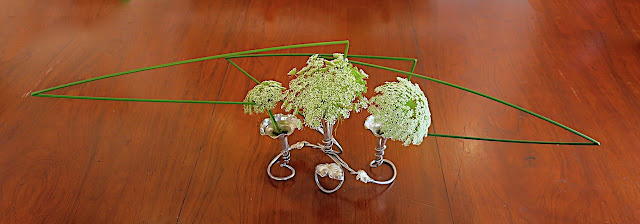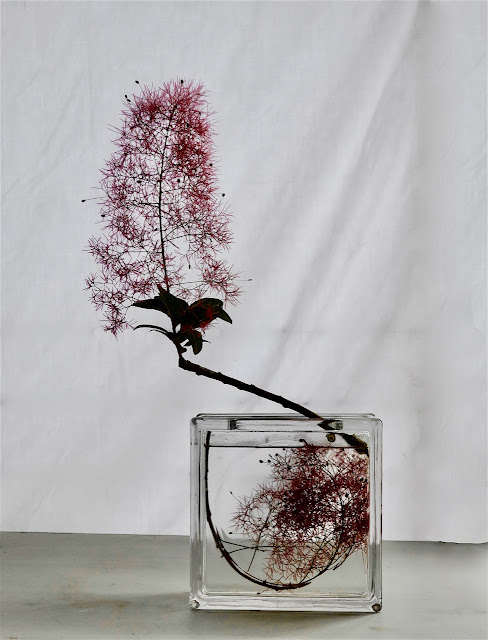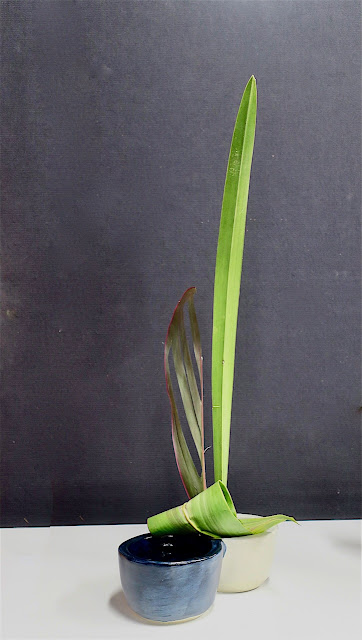The structure that I created for the first week of the Sogetsu Victoria Branch Annual Exhibition in November (see below) has now been "re-purposed".
It is now serving as a Christmas decoration.
That is, as the supporting structure for displaying Christmas cards. It has become this year's substitute for a Christmas tree. Having been so busy over recent months with the preparations for the 60th anniversary of the Victorian Branch of the Sogetsu School, many things are behind schedule. However, Laurie and I are looking forward to a more relaxing time over the summer months.
A couple of weeks ago, my student Christine, told me an inflorescence on her Strelitzia nicolai had started to open. As she was about to go away for the Christmas holidays she offered me the flowerhead. An offer which I happily accepted. The S. Nicolai in our garden is yet to flower and may still take some years.
The inflorescence has large blue-grey bracts, long white sepals and a bluish-purple "tongue". It grows on a short stem in among the very large leaves and is very heavy. I have only once before been able to use one of these flowerheads as an ikebana subject. That was back in 2003, when I attended a workshop presented by Master Instructor Tetsunori Kawana on the Queensland Gold Coast. My friend who lived there had the nerve to ask a nurseryman for one leaf and flower from a plant that I coveted, growing in the nursery.
This is the ikebana that I made at that workshop. The large leaf, which had autumn tones, curled and draped beautifully in front of the inflorescence.
This is my ikebana after critique by Mr Kawana. His comment was that with such a large and spectacular flower nothing else is necessary. Just careful placement in an appropriate vessel.
I now realise also that the leaf not so much competed with, but hid the beauty of the inflorescence. A very useful lesson.
When I took the inflorescence out of the box in which I carried it home, this above, was the first view I had. And it took my breath away. I was amazed at the geometry of the plant and the mass of white sepals at the centre of the three strong lines. I took this photo after I had removed some of the sepals as they were discolouring with age.I then took a series of photos of the flower placed in various positions in a heavy ceramic vessel. I finally settled on two images.
This shows the inflorescence from above. The mass of white sepals and the geometry are revealed.
This view shows the basic structure of the inflorescence. The largest of the bracts reaches upward to the right. A second bract points toward the left rear. A third bract is less obvious in the photo. It is reaching forward to the right front. Between the three is the mass of white sepals and blue tongues. The visual mass of the inflorescence balances with the mass of the vessel.
The vessel is by the Victorian ceramicist Graeme Wilkie.
Best wishes for the festive season,
Christopher
22nd December 2024





















































